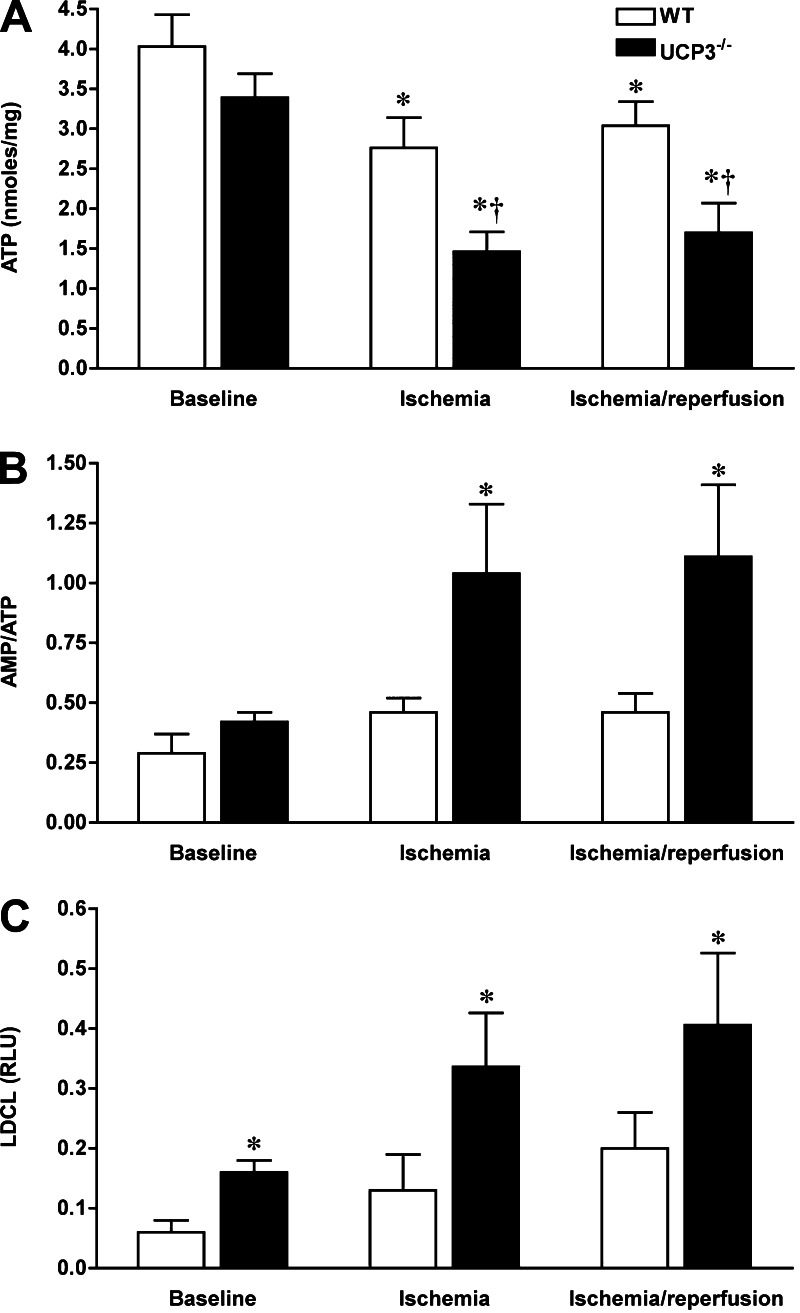Fig. 4.
I/R injury causes more severe disruption in myocardial energetics and greater reactive oxygen species (ROS) generation in UCP3−/− hearts. The myocardial content of ATP in I/R injury was significantly reduced in both WT and UCP3−/− hearts, whereas the decline in ATP production was more severe in UCP3−/− hearts than in WT hearts (A). Consequently, metabolic stress, as reflected by the AMP-to-ATP ratio, was significantly higher in UCP3−/− hearts than in WT hearts (B). Following 20 min of ischemia, UCP3−/− hearts produced more ROS in the myocardium as shown by higher lucigenin-derived chemiluminescence (LDCL; C). RLU, relative light units. *P < 0.05 compared with WT. †P < 0.05 compared with control.

